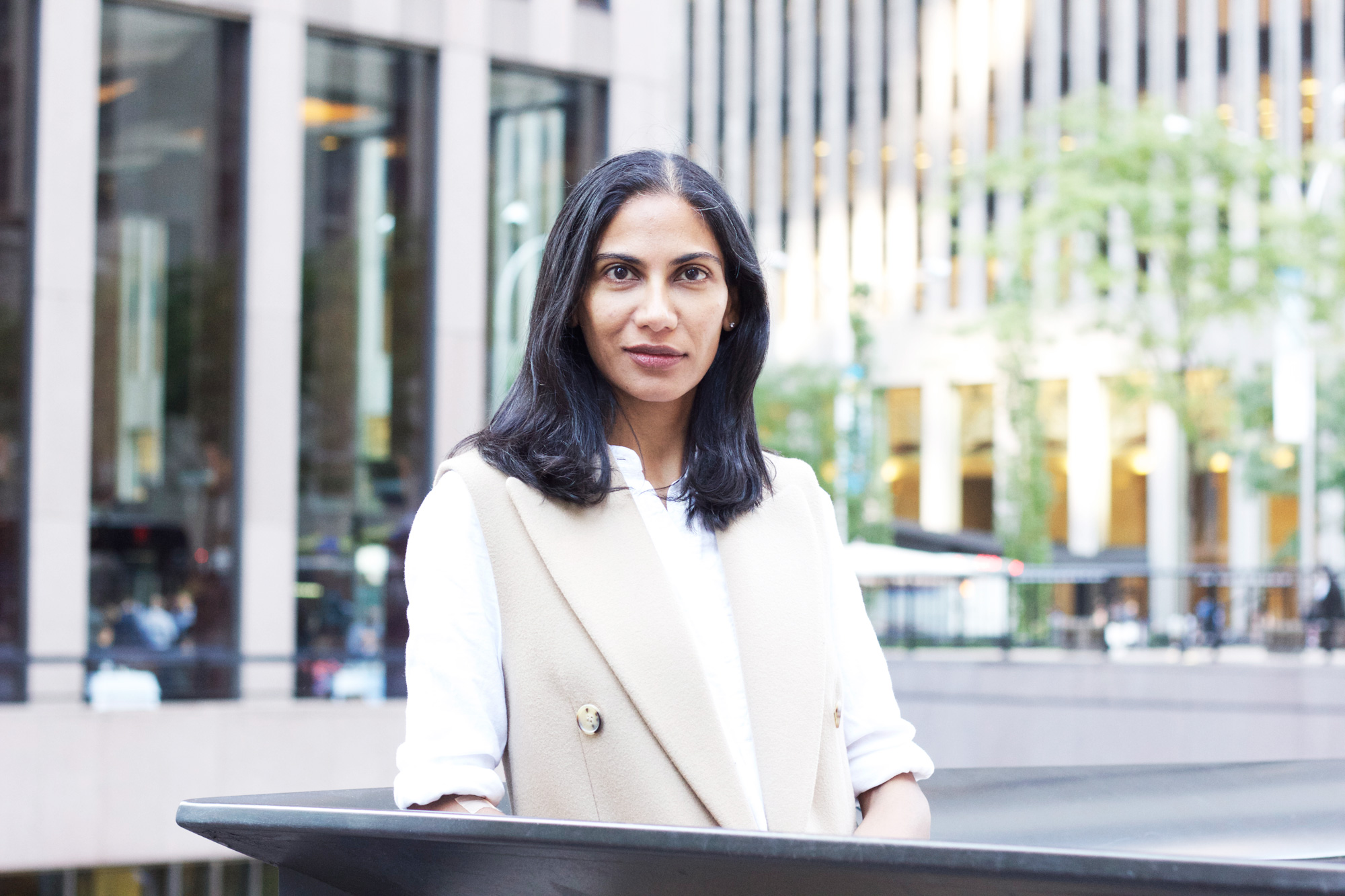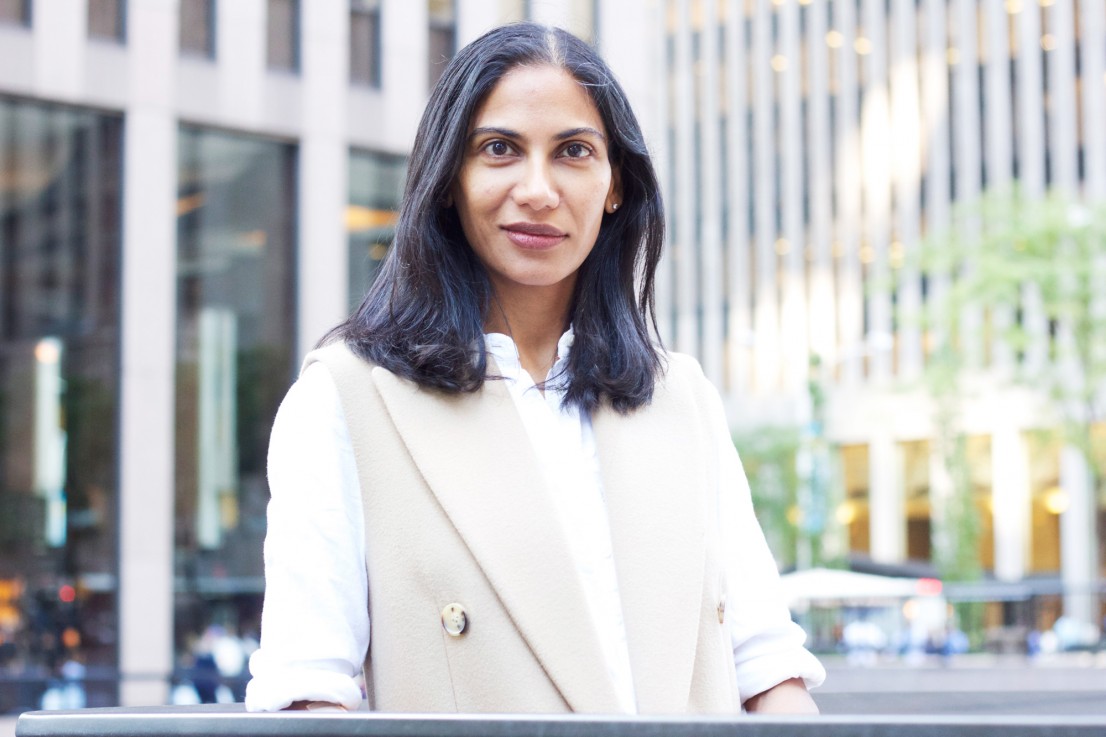I’d love to tell you that studying History of Art at the University of Michigan was a completely strategic decision but in truth, it wasn’t. Art history interested me and so I chose it as a concentration. Of course, liberal arts degrees aren’t so different from one another. I still got a good grounding in a variety of subjects—Spanish, English literature, History, Film. I think what’s important about that degree is that you learn to think critically and to write. It did turn out that for my career path, learning to write about aesthetics and forming a body of knowledge of art references was helpful, but it was happenstance. Both fashion and writing were things I was always interested in. I instinctively loved clothes and style from when I was very little. But I also had my nose constantly buried in a book and started to write poetry, stories and journals from a young age as well. That said, in college, I had no idea exactly what I wanted to do. I think that time in your life is really about figuring out your path.
I started at Harper’s Bazaar as a full-time intern in the accessories department, after graduating from college and moving to New York. A friend who had studied abroad in Spain with me was already working there, also as an intern. He told me that they needed help and made the connection with the appropriate editors. There’s an important lesson there. Everyone says that getting a job is about who you know. That is true, but it doesn’t need to be the case that your mother is best friends with an editor-in-chief. You can take advantage of connections at any level. Once I had my foot in the door through that internship, when two assistant positions became available there, I had my pick. It’s a pity that fashion internships are now being done away with. I found interning to be an incredibly valuable education and stepping stone. It’s really how most of us started.
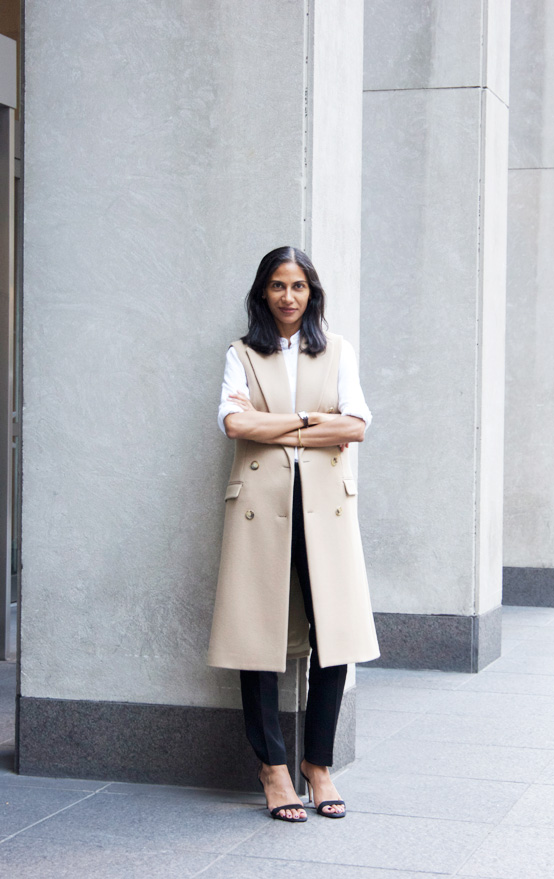 What’s most important to keep in mind is that you’re learning and no one owes you anything, such as your own pages in a magazine or the opportunity to be creative. That comes later. This is a time to absorb as much knowledge as you can about how the industry works. It’s also important to know that it’s going to be hard work, and you can’t quit just because it is. The one skill I took away from my first two jobs is problem solving. I learned that where there is a will, there is a way. You simply have to be creative and use your brain to figure out what it is. After a couple years into my second job where I was working on shoots and handling a fair amount of production, I would joke that I could make anything happen with a phone and a credit card. A nice bonus is that problem solving is an excellent skill to have in all aspects of life.
What’s most important to keep in mind is that you’re learning and no one owes you anything, such as your own pages in a magazine or the opportunity to be creative. That comes later. This is a time to absorb as much knowledge as you can about how the industry works. It’s also important to know that it’s going to be hard work, and you can’t quit just because it is. The one skill I took away from my first two jobs is problem solving. I learned that where there is a will, there is a way. You simply have to be creative and use your brain to figure out what it is. After a couple years into my second job where I was working on shoots and handling a fair amount of production, I would joke that I could make anything happen with a phone and a credit card. A nice bonus is that problem solving is an excellent skill to have in all aspects of life.
I’ve never been strategic with my career moves. I’m sure that there are people who have carefully charted their fashion careers with 5 and 10-year plans but that’s never been me. It’s not that I don’t think it’s important to have goals, but you really have no idea what opportunities lie ahead of you and how your own life may change and inform what you want out of your career. What I’ve always focused on is doing great work in whatever role I’m in and to make sure I’m learning and growing. I think when someone is too focused on moving on to the next level, it can cloud her judgment. For instance, during the three years that I was assisting Joe Zee at W Magazine, I was offered other positions at publications that on paper sounded much more prestigious than being a stylist assistant but that were nowhere as exciting, challenging or interesting. It was slightly difficult to turn them down but I’m glad I did. I’m quite happy with the path that my career has taken and I couldn’t have possibly planned it.
In 2006 I went freelance. I was frustrated for a few different reasons with my job as fashion news editor at W Magazine and WWD and after a lot of consideration—and some good advice from my ex-boss Joe Zee—I decided it was time for a change. I had been there for a total of 7 years so I had certainly put my time in and wanted to move on. It was a very freeing decision. I had also worked on an outside project that gave me a nice little cash cushion. That was helpful. I was operating by the adage, “Jump and the net will appear.” I don’t advise it in all cases but if you’re deeply unhappy in a job, it can sometimes be the best thing to just leave in order to force something new.
First and foremost, before you build your social media profile or make sure you get your picture taken at every part, freelancers must learn how to write in order to set themselves apart. Just because you can type words onto a page does not make you a writer. Good writers—the ones who can structure a story, write with clarity and without clichés—are very rare these days. The best way to learn to write is to read a lot of good writing, whether it has to do with fashion or not. Absorb it. Study it. Figure out what makes it good and why you like it. Also try to learn from the editing that you get. Another way to stand out is to not be lazy. Do your research. Do your reporting on the phone or in person. It’s shocking to me the number of writers today who rely on email interviews. Trust me, that always makes for a lacklustre story.
There are loads of people I love to read. Cathy Horyn has a way of just cutting through the nonsense and speaking her mind in a clean and efficient but very engaging way. Lynn Yaeger is another. Her stories combine quirk and humour in a refreshing style that’s very unique to her. My former Style.com colleague Tim Blanks is just so artful and elegant. Another ex-Style.com hand and friend, now at the New York Times, Matthew Schneier is a really smart, young voice. Michael Specter has done some of the best designer profiles for the New Yorker. One writer that made an impression on me when I was in college reading Vogue was Marina Rust. She had a short-lived column called “She’s Gotta Have It,” which ran in 1996 and ’97 in which she’d approach a trend like chunky heels or Japanese designers in this very personal way that was pretty insider-y—she used all first names of friends—but somehow also really engaging and relatable. In a short amount of space, she managed to capture this slice of life where a real woman encountered some new-fangled bit of fashion. I recently got PDFs of all her columns from the Condé Nast library. They’re still inspiring!
[show_shopthepost_widget id=”1183759″]
The way that the digital space has gained in importance over the past decade can’t be overstated, and that has been both positive and negative. On one hand, it’s fantastic to have so many voices and so many opportunities to be heard. For instance, it would have been a pity if Cathy Horyn, after she left the New York Times, wasn’t heard from again until she had another equivalent role, which she may not have wanted. Instead, writing for The Cut at NYMag.com gives her a platform with flexibility. And I love the democracy of someone with great style and an interesting point of view—like Emily Weiss or Leandra Medine—being able to express themselves without needing years at a magazine job. The downside of digital’s rise is the proliferation of click-baity garbage, which I hope will die down in favour of more interesting stories.
Style.com is an amazing and appropriately terrifying prospect that your opinion will be read by so many of your peers. But having done that for several years on such a tight deadline was probably one of the most valuable experiences in my career. It’s like a boiler room. I learned to think fast and write fast. Of course, there were occasions when I wished I could sit with something a bit longer to form my opinion. The best collections can sometimes take days or weeks to fully unfold in your head. Still, I stand by most of what I’ve written.
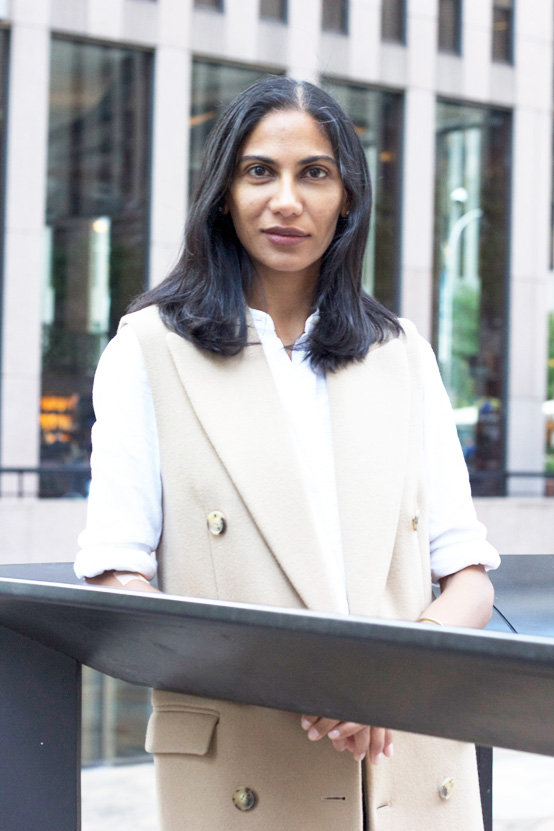 I don’t really think there’s a difference between writing for print and digital. Or at least in my opinion, there shouldn’t be. Some people might say that you can be more conversational with an online piece—or they might think that an online piece doesn’t require as much reporting and work—but I disagree. I don’t think online work has to be fluff that barely needs digesting. And increasingly I think this distinction is disappearing because quite frankly everyone reads everything—whether written for print or online-only—on tablets and phones. I quite happily read books on my iPhone 6 on my Kindle app. The last thing I read was Hanya Yanagihara’s “A Little Life,” which clocked in at over 700 pages. Nothing fluffy about that.
I don’t really think there’s a difference between writing for print and digital. Or at least in my opinion, there shouldn’t be. Some people might say that you can be more conversational with an online piece—or they might think that an online piece doesn’t require as much reporting and work—but I disagree. I don’t think online work has to be fluff that barely needs digesting. And increasingly I think this distinction is disappearing because quite frankly everyone reads everything—whether written for print or online-only—on tablets and phones. I quite happily read books on my iPhone 6 on my Kindle app. The last thing I read was Hanya Yanagihara’s “A Little Life,” which clocked in at over 700 pages. Nothing fluffy about that.
At Off Duty at The Wall Street Journal, we work on about three issues at a time. That means on an average day I could be editing a story for that weekend’s issue, reviewing product to be shot for the weekend after and then having a cover concept meeting for an issue three weeks away. Usually there’s a lot of stuff coming at me all day—questions from my editor, from the art department and my team; emails from publicists and writers pitching stories—so if I need to really focus on editing or writing a story, that gets done after 6 or 7pm. During fashion month, everything gets pushed to after hours. I have a lot of nights where I’m working until 1am.
Nurturing relationships is important. You’ve got to talk to people. Everyone obviously communicates via email for the sake of efficiency but what you get out of having breakfast, lunch or even a 10-minute phone call with a publicist or a designer can’t compare. And always be fair and upfront in your dealings with people, whether you consider them important or not. The industry might seem big but you’ll be coming across the same people in different roles again and again. Don’t burn bridges. When I’m hiring writers, I’m always looking for curiosity, the ability to think independently and a willingness to work hard. You don’t need to be fabulous. You don’t need to be in head-to-toe Céline. Just show me you can think creatively and are willing to do the work. The best advice I got was from the legendary Lorna Koski at WWD, which was to not ever be intimidated or overly impressed by the person you’re interviewing.
There are so many people responsible for giving me career breaks. Richard Sinnott hired me as his assistant at Bazaar when I was just a clueless college grad from the Midwest. Joe Zee asked me to be his stylist assistant at W when I had almost no experience working on photo shoots and no desire to be a stylist. I may not have become a writer without Bridget Foley, who hired me as W’s fashion news editor, based solely on the strength of a couple story pitches, a memo and one published piece. And I had never edited a single piece when Dirk Standen asked me to cover the executive editor’s maternity leave at Style.com. I told him that and he said something like, “Don’t worry. You’ll be fine.” It’s a pretty amazing thing when people believe you can do something and simply expect to succeed.
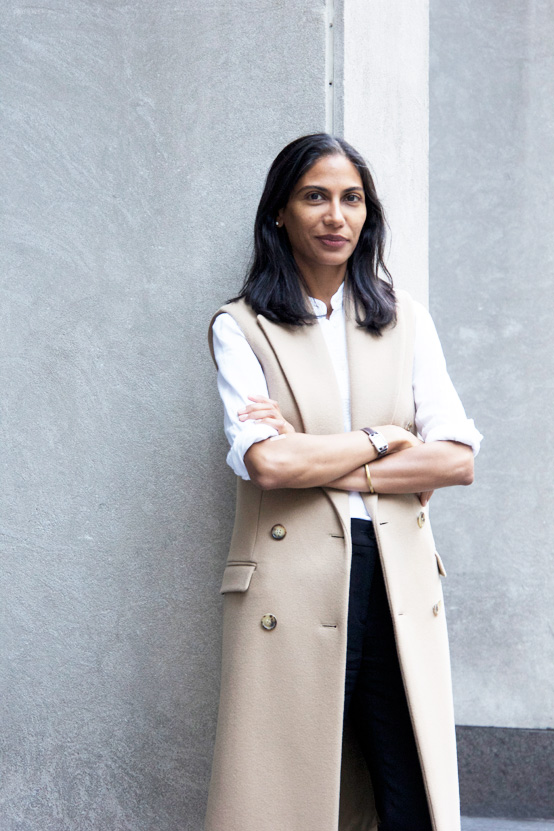 More than mentors, I think having a strong professional network has helped me. I’ve been lucky enough to make some really smart, talented and generous friends in this industry. When I’ve been considering taking a new job or have needed advice on how to manage a political issue in my current role, I’ll check in with my girl gang. I don’t know what I’d do without them. There were definitely times when I lacked confidence and missed out on opportunities. Being aggressive and overly ambitious isn’t really part of my personality so if the self-doubt sets in, I won’t take something on. In terms of looking for a mentor, I think Sheryl Sandberg’s take in “Lean In” is pretty on-point. You can’t just ask someone you barely know to be your mentor. There has to be a relationship and connection already in place. In Lean In, she talks about how choosing the right partner is one of the most important decisions a woman can make as far as a her career is concerned. I think it’s incredibly important. Possibly make or break. I’ll be having my first baby in February and the fact that my fiancée sees himself as an equal caretaker of our child is going to be invaluable.
More than mentors, I think having a strong professional network has helped me. I’ve been lucky enough to make some really smart, talented and generous friends in this industry. When I’ve been considering taking a new job or have needed advice on how to manage a political issue in my current role, I’ll check in with my girl gang. I don’t know what I’d do without them. There were definitely times when I lacked confidence and missed out on opportunities. Being aggressive and overly ambitious isn’t really part of my personality so if the self-doubt sets in, I won’t take something on. In terms of looking for a mentor, I think Sheryl Sandberg’s take in “Lean In” is pretty on-point. You can’t just ask someone you barely know to be your mentor. There has to be a relationship and connection already in place. In Lean In, she talks about how choosing the right partner is one of the most important decisions a woman can make as far as a her career is concerned. I think it’s incredibly important. Possibly make or break. I’ll be having my first baby in February and the fact that my fiancée sees himself as an equal caretaker of our child is going to be invaluable.
In terms of career highlights, when I was working for Joe Zee at W Magazine I had some pretty magical experiences since we travelled so much and worked with great photographers. I still treasure being at Stephanie Seymour’s home in Greenwich, Connecticut with Juergen Teller while he was shooting her wearing her vintage couture. In what other job would I ever get to see the inside of her closet? I remember being in the Dominican Republic in 2002 with Bruce Weber working on one of his grand-scale shoots for W. This cast included Oscar de la Renta, the Clintons, Gael Garcia Bernal and Natalia Vodianova, just to name a few. I also love to look back at the moments I had with designers in their early days. I interviewed Jack and Lazaro from Proenza for WWD when they were still Parsons students living and working in a dingy Korea town loft. I remember Lazaro delivering samples to the office himself.
The way the fashion industry can sort of take over your entire life is both a blessing and a curse. It’s fantastic that it’s so social and you can actually build real friendships. But then you could also never have a personal life. I’ve just learned to say no. It’s not easy and people might not like it if you can’t attend their dinner or go to their event but it can’t come at the expense of your friends and family. I just try to take a night off, get some macrobiotic food and go to bed early. Things are usually considerably better the next day.
Meenal Mistry is the fashion director of Off Duty at the Wall Street Journal and was photographed in New York by Naomi Mdudu. This interview has been edited and condensed.

